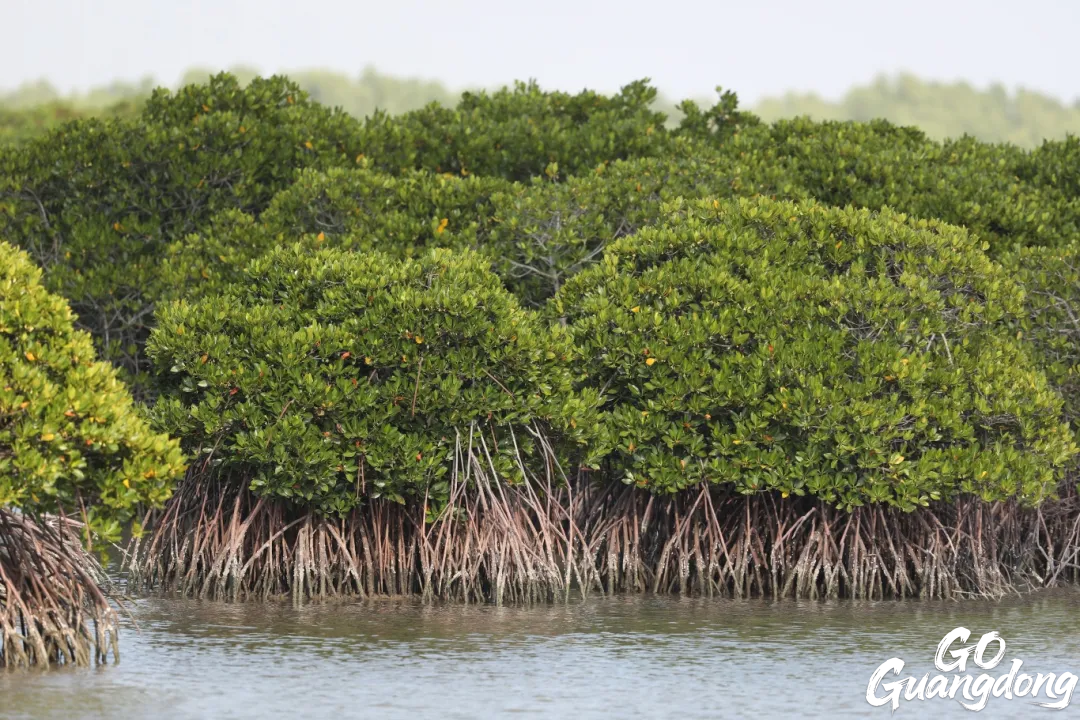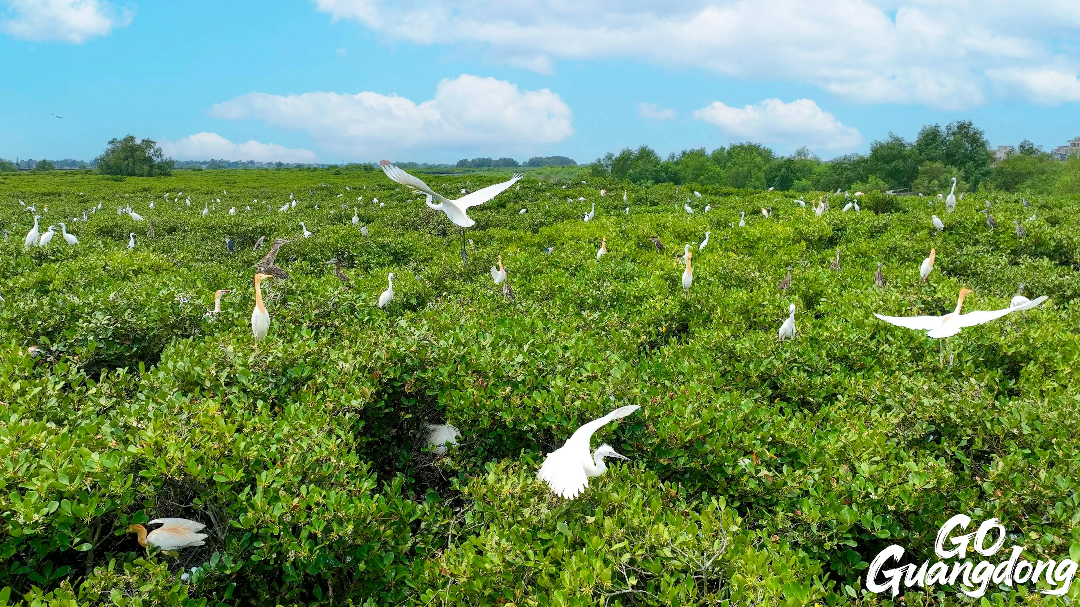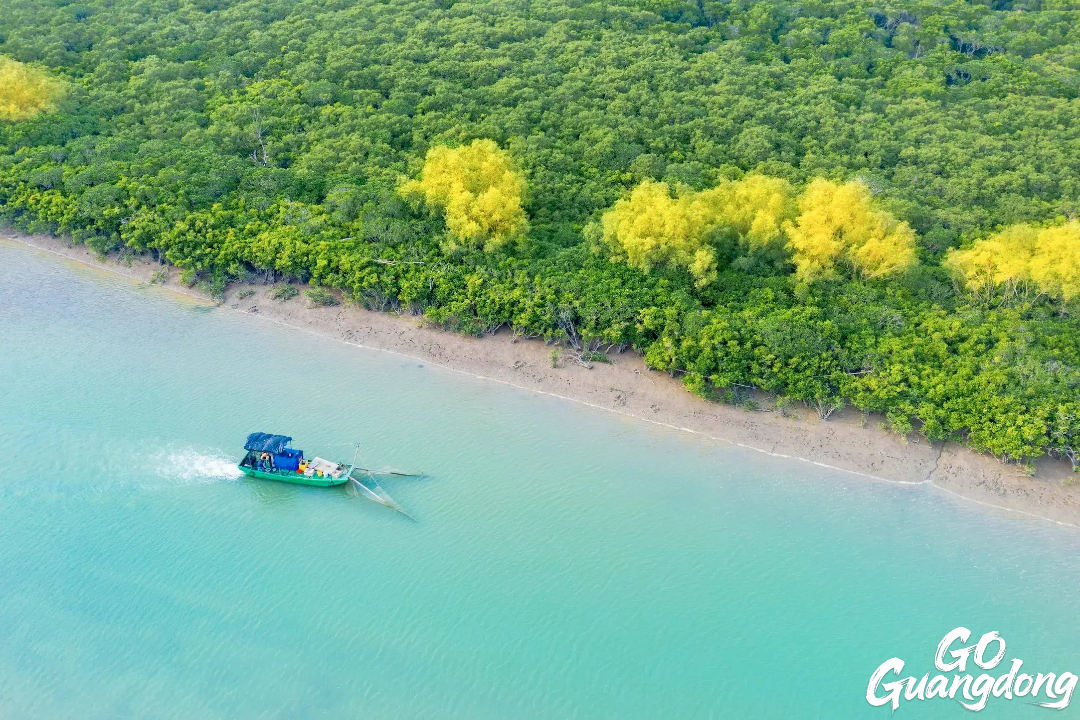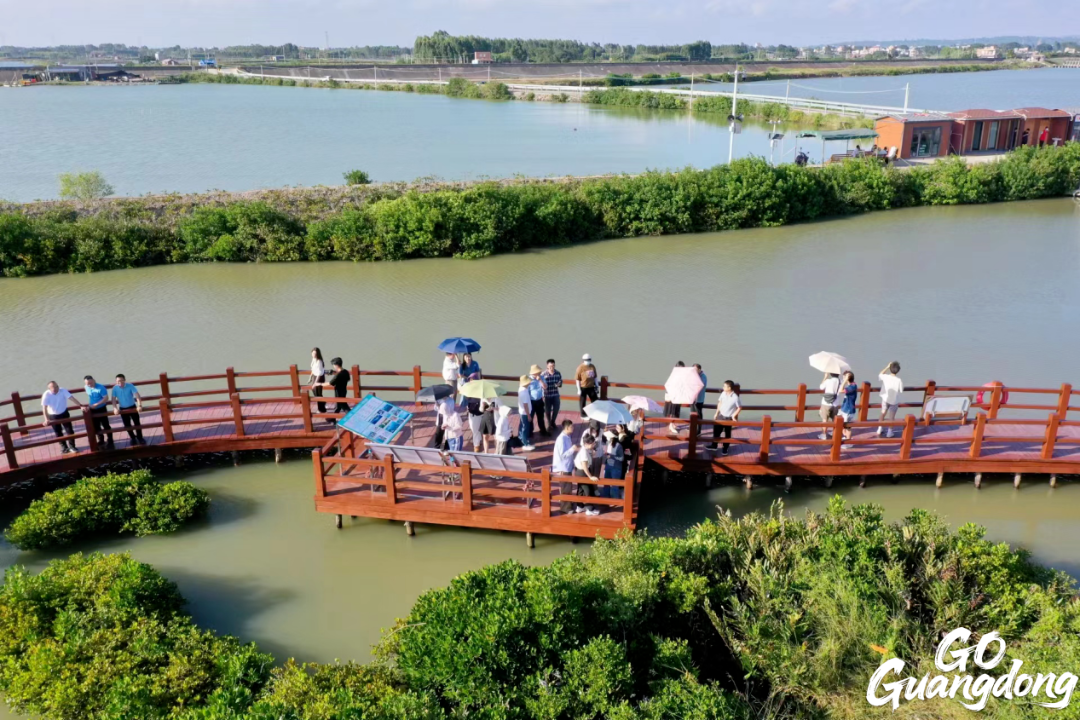
Guangdong Zhanjiang Mangrove National Nature Reserve ( Photo by Yangcheng Evening News)
Located in the southernmost Leizhou Peninsula of Guangdong Province, the Zhanjiang Mangrove National Nature Reserve is the largest mangrove reserve in China. Covering 20,278.8 hectares, it accounts for one-fifth of the country's total mangrove area. Conservation efforts by the government and environmental organizations have strengthened ecological management, resulting in sustained growth in avian biodiversity and population sizes. The reserve was designated as a wetland of international significance by the Ramsar Convention in 2002 and was selected as one of Guangdong Province's top ten forest tourism destinations in 2021.
Diverse mangrove and bird species observed
In the Zhanjiang reserve, the mangrove forest covers an area of over 9,000 hectares, accounting for 33 percent of the national total and 78 percent of the provincial total, ranking as the largest and most concentrated mangrove nature reserve in China.
The reserve features the widest range of mangrove species along the Chinese mainland coastline, comprising a total of 26 species. The most widely distributed and abundant species include Avicennia marina, Aegiceras corniculatum, Rhizophora stylosa, Kenaelia candel and Bruguiera gymnorhiza.

Rhizophora stylosa (Photo by Nanfang Magazine)
At high tide, submerged tree trunks create a unique "forest over the sea" while flocks of birds gather above the canopy. As of today, the reserve has recorded 316 bird species, including 70 nationally protected species, among which are rare and endangered birds such as the spoon-billed sandpiper and the black-faced spoonbill. After the tide recedes, benthic organisms become active. The reserve boasts incredible marine biodiversity, encompassing 130 mollusk species, 139 fish species, 19 shrimp species, 57 crab species, and 126 plankton species.

Birds gather on mangrove at high tide (Photo by Yangcheng Evening News)
Efforts made to protect and enhance mangrove value
In recent years, the reserve and environmental organizations have continuously worked to improved the ecological environment. To date, over 300 acres of mangroves have been newly planted, while pest control and disease monitoring have been conducted across a 1,210-acre protected area. As the environment in the reserve has improved, both the diversity and population size of birds have steadly increased. More rare and nationally protected bird species become frequent visitors to the reserve. Additionally, a new bird species, the Line-tailed Swift, was discovered here for the first time in Guangdong Province.
Meanwhile, the reserve has developed a specific fishery mode which integrates mangrove cultivation and breeding. It has enhanced the multifunctional value of mangrove ecosystem services, tangibly increasing residents’ income and driving rural revitalization.

Fishery mode featuring mangrove cultivation and breeding (Photo by Yangcheng Evening News)
Tourist activities provided to explore mangrove ecosystem
Zhanjiang promotes tourism through its mangrove reserve and has developed the Techeng Island Mangrove Ecological Theme Park (特呈岛红树林生态主题公园), which is now a nationally recognized 3A-level tourist attraction. The city has also introduced a variety of mangrove-themed tourist routes that allow visitors to explore the mangrove ecosystem while engaging in activities such as oyster farming, crab and shellfish gathering on the beach, food tasting, and bird watching. Additionally, the city organizes events like seafood festivals and marathons, offering tourists a chance to experience the unique charm of the city.

Mangrove ecological tourism (Photo by CCTV)
Opening Hours: All day
Ticket: Free
Address: S288, Mazhang District, Zhanjiang City (湛江市麻章区S288)
Reported by Zhou Jiyin
Edited by Yin Juewen










